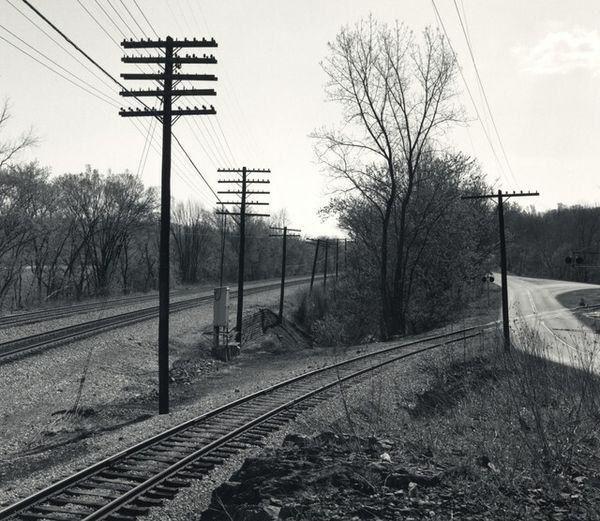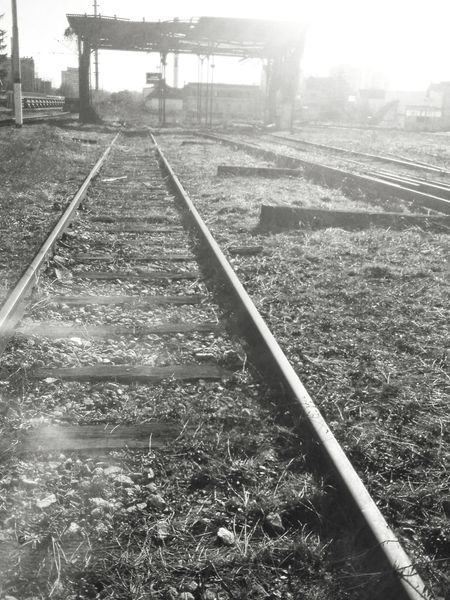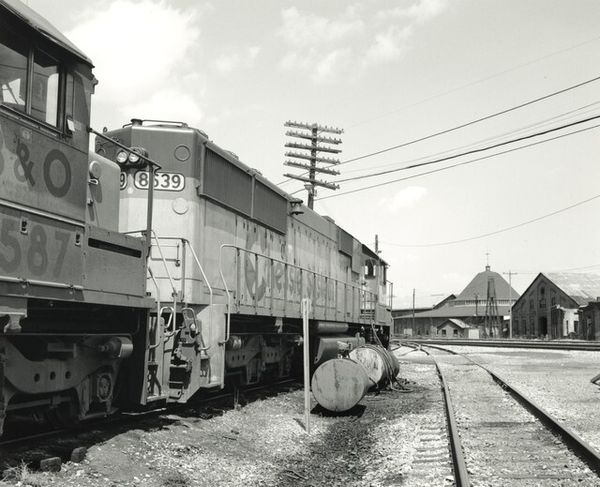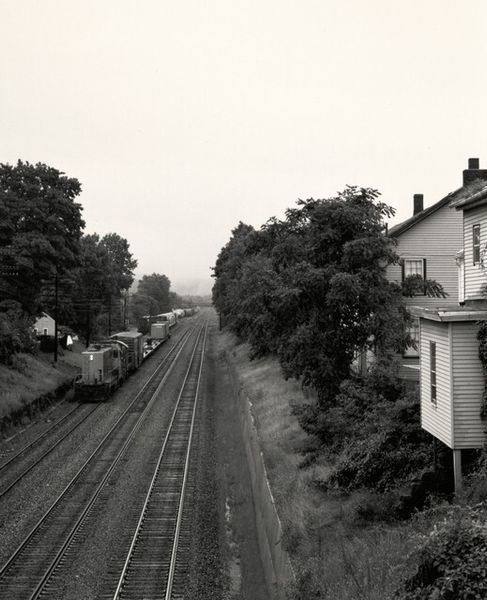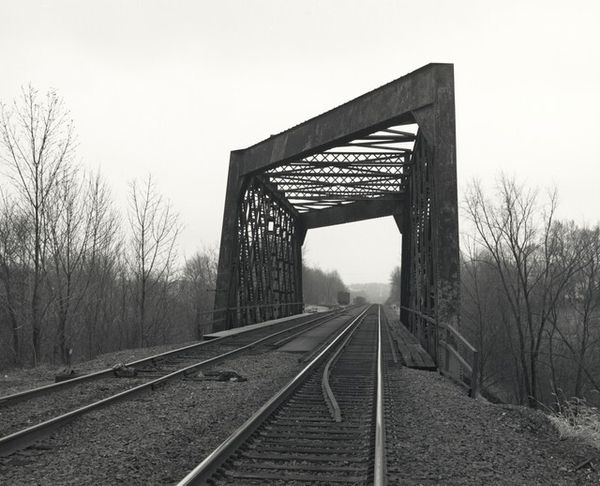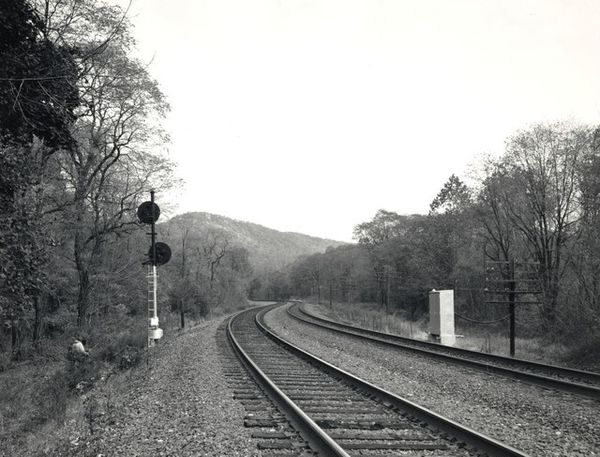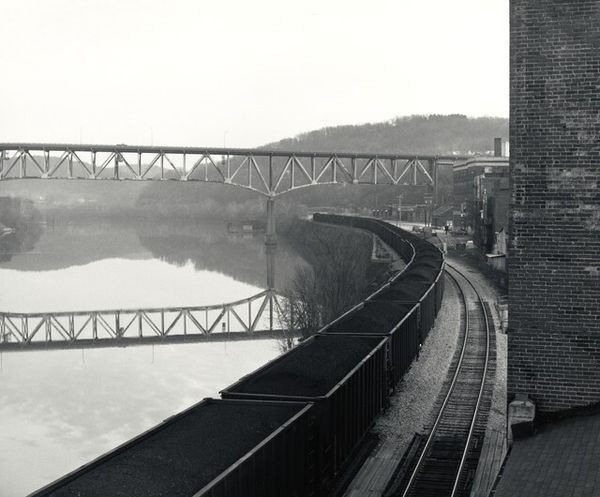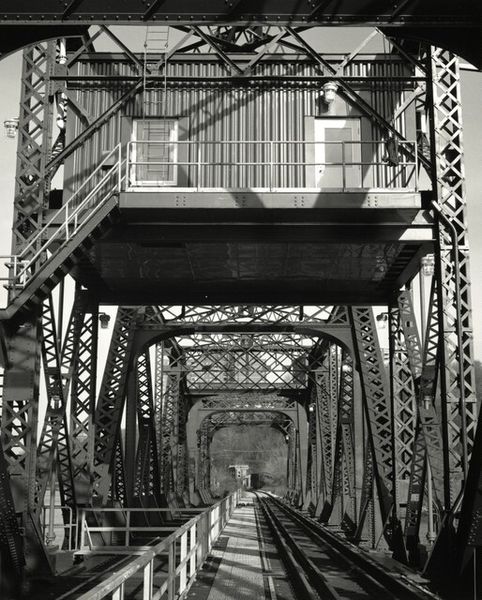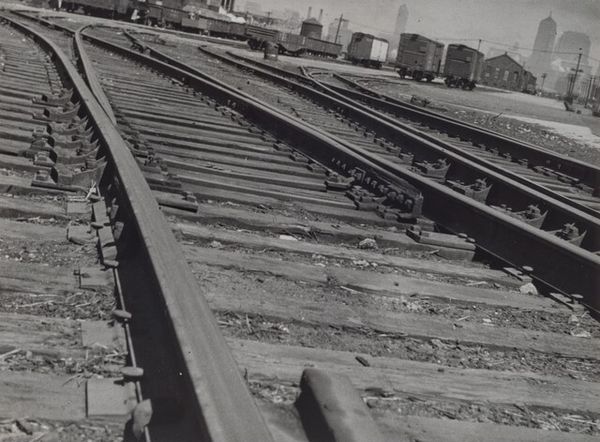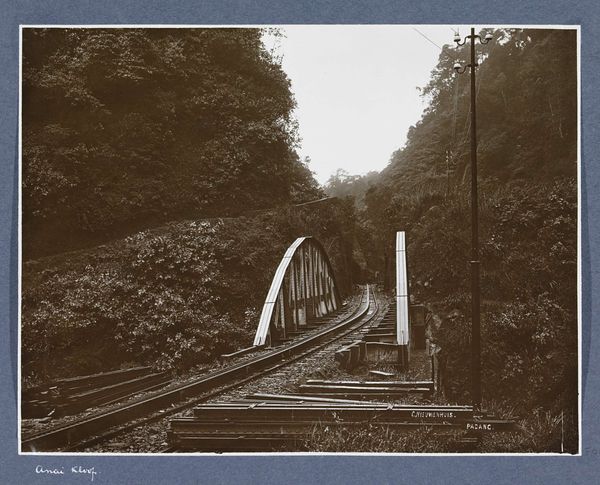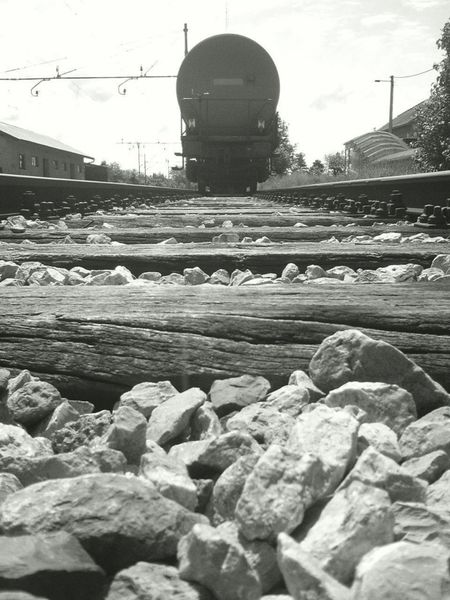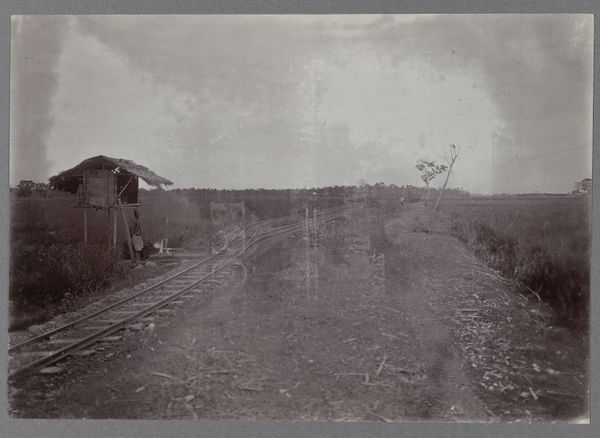
photography, gelatin-silver-print
#
landscape
#
street-photography
#
photography
#
gelatin-silver-print
#
modernism
Dimensions: image: 24.13 × 27.94 cm (9 1/2 × 11 in.) mat: 54.61 × 44.45 cm (21 1/2 × 17 1/2 in.) framed: 59.69 × 49.53 cm (23 1/2 × 19 1/2 in.)
Copyright: National Gallery of Art: CC0 1.0
Curator: This gelatin silver print, taken by James Welling in 1990, is titled "Danbury, Connecticut". It depicts a train yard, stark and seemingly abandoned. Editor: The bleakness hits you immediately. The grain of the silver print, combined with the low contrast, creates this really somber, almost apocalyptic feel. I mean, look at that derelict building on the left – boarded up, weathered... it speaks of abandonment and decay. Curator: Indeed. Welling often focuses on the industrial landscape and how it reflects socio-economic changes. Danbury, like many other manufacturing hubs in the Northeast, faced significant challenges in the late 20th century with deindustrialization. The railway here, normally a symbol of progress and connection, feels like a relic. Editor: And the train itself, or rather, the trains. They seem like behemoths, these metal giants reduced to sitting idle. What’s especially interesting to me is the labor implied but not seen: the workers who maintained these tracks, who built the engines, who operated the railway lines, they're all ghostly presences in this composition. Curator: Precisely. Welling's photograph highlights the materiality of the industrial world, presenting us with metal, wood, and stone arranged within a constructed system meant for a very specific function. But what happens when that system declines, when labor is no longer needed? The romanticism of industry crumbles. Editor: Exactly! And that brings us to the composition itself: the strong verticals and diagonals of the tracks and the supports of the overhead line create this rigid, almost oppressive framework around the softer, more organic forms of the unkempt foliage and the sky above. It really underscores the tension between nature and industrial construction. Curator: I find it compelling how Welling frames our engagement with that industrial landscape. By showing it to us from this slightly distanced, objective vantage point, it prompts a thoughtful look at our own relationship with industry, its successes, and its failures. Editor: It's more than a photograph, it’s a document of labor and industry—one that invites consideration of our dependence on the processes and means that shape our lives. It really makes you think about what remains when the job is done, or perhaps, moves away.
Comments
No comments
Be the first to comment and join the conversation on the ultimate creative platform.
